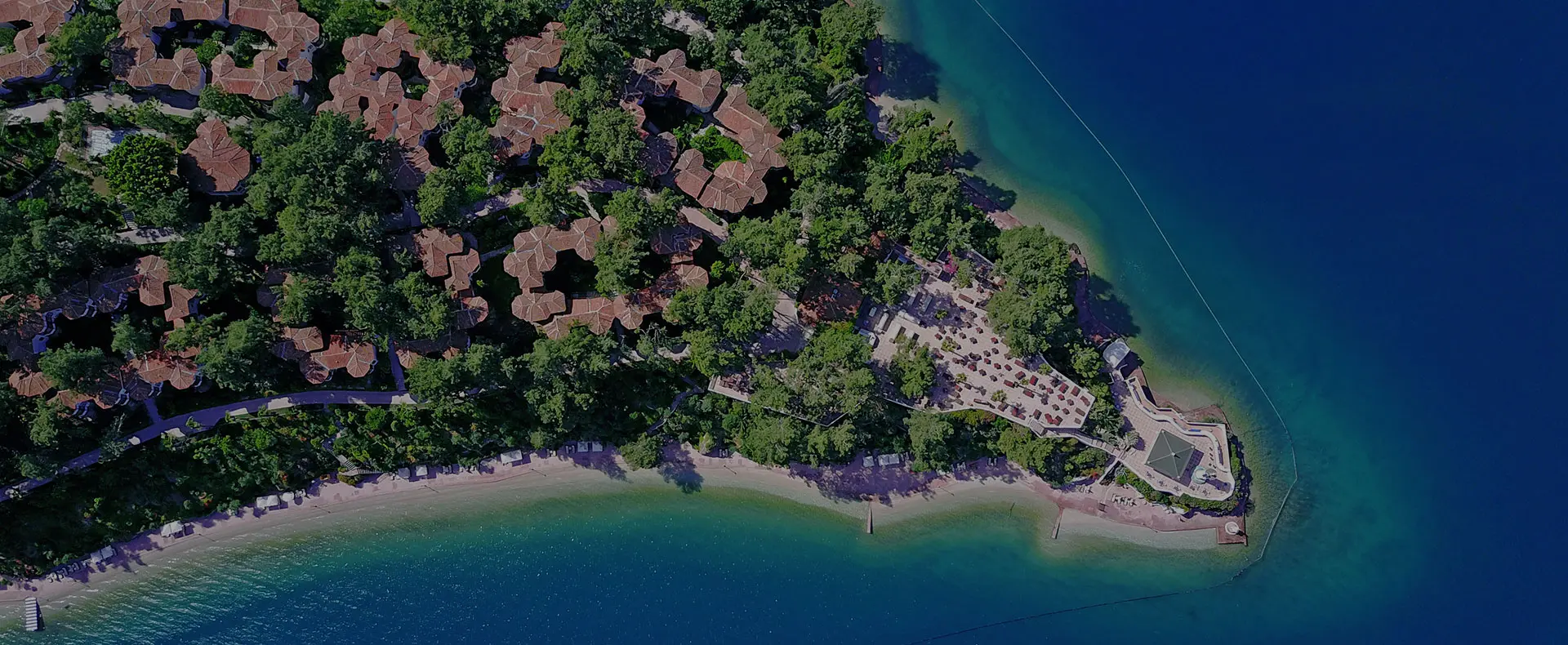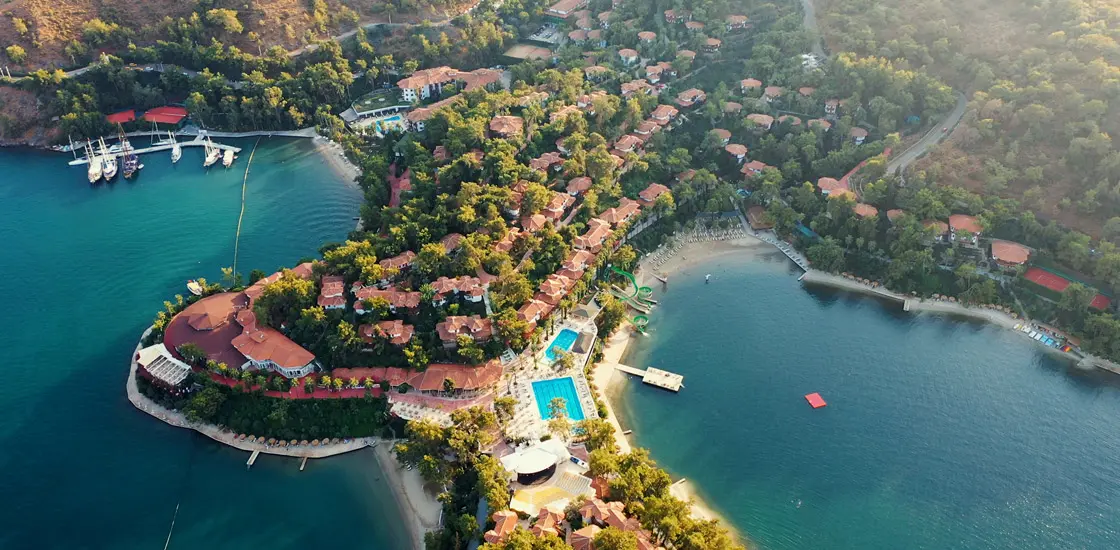
Fethiye, one of Turkey's popular holiday destinations with its magnificent nature, historical buildings and uniquely beautiful beaches, hosts millions of local and foreign tourists every year. Fethiye attracts the attention of holidaymakers with its rich cultural heritage and natural beauty.
The most striking places to visit in Fethiye are its ancient cities and museums. Fethiye Museum contains many works that reflect the rich history of the region. Sculptures, ceramics and other archaeological findings from the Lycian period are exhibited in the museum. In addition, places such as Tlos, Kaunos and Telmessos, ancient cities in Fethiye, are natural paradise for travelers interested in history. Exploring the ruins of these ancient cities gives visitors the feeling of time travel.
If you want to spend your holiday in Fethiye, Fethiye Club & Hotel Letoonia offers a unique accommodation experience. The hotel exceeds the expectations of holidaymakers with its location and facilities. It opens the doors to a pleasant holiday with its seafront location, private beach, pools and water sports opportunities. In addition, Club & Hotel Letoonia spa center, restaurants, night entertainment and special activities for children will make your holiday unforgettable.
Fethiye is a holiday destination that appeals to everyone with its places to visit, historical riches, excellent beaches, delicious food and holiday opportunities. By staying at Fethiye Club & Hotel Letoonia, you can discover the beauties of this magnificent region and have an unforgettable holiday experience. Make a reservation now to plan your holiday and enjoy Fethiye to the fullest.

The name Letoonia has its roots in the ancient civilization of Lycia and shares over 3,000 years of history with the legendary cities of Letoon, Kas, Patara and Xantos, all of which are within day-trip distance of the resort. The peninsula lying between Fethiye and Antalya was known as Lycia in ancient times. According to Homer’s Iliad and the Kadesh War Peace Agreement, Lycians were natives of Anatolia and sea-faring people. They were one of the oldest tribes of Anatolia, participating in the Kadesh War alongside the Hittites. Lycia has been invaded by Persia, Alexander the Great, Romans and Byzantines throughout history, but the Lycians never fled their homeland.
The Letoonia Club & Hotel name is derived from the ancient city of Letoon (located about six kilometres from the Letoonia Resort site), which was once one of the most important religious centres of the Lycian region. Mythological tales explain that Zeus’s mistress Leto was given the land of this region and that Letoon was named after her. To prevent his wife from killing her, Zeus hid Leto in this land so that she could safely give birth to his sons Apollo and Artemis. So far, a Greek-style theatre has been excavated at Letoon, and ongoing digs indicate that the remains unearthed so far belong to the period between the 7th Century BC and the 6th Century AD. The region is a treasure trove of mythical legends.
Lycia is home to many ruins, and visiting the various digs and excavations makes for a fun day out and a chance to appreciate the rich agricultural nature of the local land. The region is famous for its prolific growth of fruits and vegetables such as figs, tomatoes, cucumber, pepper, corn, sesame and olives. White cheese is a Lycian delicacy, and the production of honey a local tradition appreciated all over the country. In addition, many of Turkey’s vineyards are located in Lycia, so wine production is another regional activity.
Fethiye has several ancient ruins, most notably the Lycian Rock Tombs (Lycian sarcophagi), located high up in the rock face. The tomb of Amyntas, which has become the logo of Letoonia Resorts and has long been a recognised symbol of Fethiye, is an eye-catching ruin overlooking the bay. Amyntas is believed to have been a king or governor of Telmessos (the ancient name for modern-day Fethiye) during the Hellenistic period. Fethiye is also home to a fortress built by the Knights of Rhodos and a Roman theatre.
Apart from the eye-catching ruins, one of Fethiye town’s main attractions includes the bazaar, a market that takes place every Tuesday and Friday. It is the perfect opportunity to test your skills at bartering and haggling for a wide range of local produce, goods and souvenirs. Fethiye is a coastal town with a delightful harbour promenade where boats set sail daily, bearing tourists on the locally famous cruise: the Twelve Island Cruise Tour. There are many colourful cafés and restaurants along the waterfront, with tables and chairs spilling onto outdoor terraces where meals of fish and fresh salads can be enjoyed.
The 21-kilometre stretch of golden sands at the beach of Patara is an easy day trip from Fethiye, and the dunes make a perfect backdrop for sun-worshippers and sandcastles. This beach is also a protected area as it is the chosen nesting place of the Caretta Caretta turtles who lay their eggs on it. The road leading to the beach passes by an old ruined house, and this is the birthplace of Saint Nicholas, the pre-incarnation of Father Christmas, who went on to run a parish in Demre, a small town along the coast.
The gorge of Saklikent is 18km long, making it the largest canyon in Turkey (and one of the largest in the world), and only a day trip away from Fethiye and a chance to walk deep into the rock canyon and through the freezing melting water coming down from the nearby mountain-tops.
In Fethiye, boats can be hired to take sightseers to other nearby must-see destinations such as the town of Gocek, which has become so popular with British tourists that one of the local estate agents lists the property prices in sterling. 2006 saw Demi Moore and her family charter a yacht in these waters and pause to experience the bays, coves and marinas of this wonderful stretch of Aegean coastline. Their presence reflects that this region has long been the holiday home of the Turkish aristocracy and upper-middle class.
From Fethiye, travel to nearby Oludeniz, also know as the Blue Lagoon (and one of the most iconic beaches of Turkey) and take a water taxi (whether private or group) to the valley’s beach. The journey takes approx 30 mins, and visitors are dropped on the beach and left to explore this wonderful nature reserve that is the nesting ground of millions of butterflies from hundreds of species. The site is protected and can only be accessed via the beach, where some visitors choose to camp.